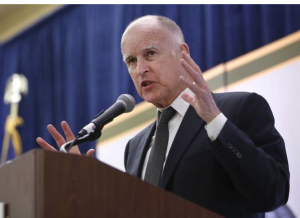Governor Brown has somewhat reluctantly taken an important step forward in prison reform. While just a few short months ago, he was insisting that he had done all he could to improve prison overcrowding consistent with community safety, he has with the passing of two important pieces of legislation still made impressive progress.
As noted in the Press-Enterprise, on Oct. 5, Governor Brown signed into law the Trust Act, which bars police from turning over immigration detainees arrested for non-violent crimes to federal immigration officials for possible deportation. While the impact upon prisons may not be immediately apparent, the fewer immigrants held in custody either in state or county facilities (or in state or county facilities leased by federal authorities), the less the need for new prisons and jails in the state.
More importantly, Governor Brown signed a bill, a compromise hashed out with State Senate President Daryl Steinberg, that allows for the continuing imprisonment of some 9,000 prisoners (with the agreement of the three judge federal panel), while over $300 million is spent on drug and mental health treatment, and other alternatives to imprisonment over the next three years.
If the Three Judge Federal Panel had refused to modify it’s previous order to reduce Cal prisons by an additional 9,000 by Decemebr 31, Brown would have sent the 9000 to private or out of state prisons. But the Judges seized upon the opening to move the state toward a more lasting and “durable solution to the prison crowding problem”, and extended the prison reduction deadline until Jan. 27 to allow the state to meet with inmate lawyers and said that they might extend the deadline even further if progress is being made.”
Importantly, as noted in a Press Democrat article, “the court also gave some directions, saying discussions about reducing prison crowding should cover juvenile offenders serving lengthy sentences, inmates being held for federal immigration authorities [addressed in the Trust Act], elderly and infirm inmates, and three strike inmates eligible for early release under an initiative approved by voters in 2010”.
All of the above is an important intermediate step in a process to reform California’s prison system. As noted in my article of February 2013, “The easy part of prison reform”, found immediately below, we are just beginning the process of reforming our sentencing and prison system.


